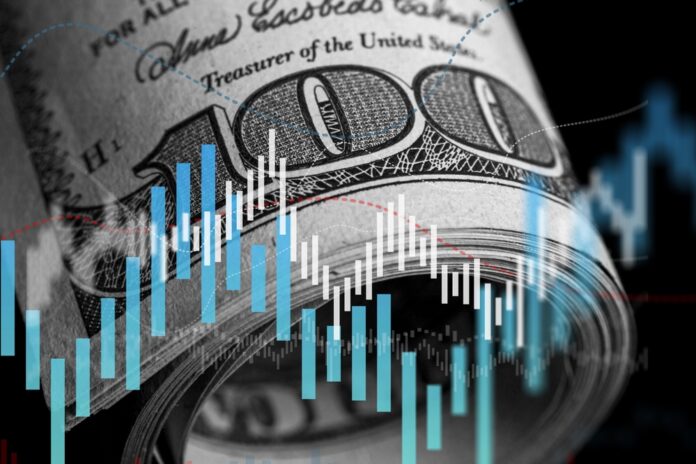The U.S. dollar strengthened on Wednesday, building on the previous session’s rebound as market sentiment improved following President Donald Trump’s more conciliatory remarks regarding Federal Reserve Chairman Jerome Powell. A calming of trade tensions between the U.S. and China also added support to the greenback.
As of 04:00 ET (08:00 GMT), the U.S. Dollar Index—which measures the currency against a basket of six major peers—rose 0.3% to 98.960, extending its recovery from a three-year low touched earlier on Tuesday.
Trump Backs Off Fed Criticism
The dollar found renewed strength after President Trump softened his tone toward Fed Chair Jerome Powell, whom he had recently blamed for not cutting interest rates more aggressively. Speaking to reporters on Tuesday, Trump clarified, “I have no intention of firing him. I would like to see him be a little more active in terms of his idea to lower interest rates.”
Just last week, Trump had signaled a desire to replace Powell—comments that rattled markets and raised concerns about the Fed’s independence, a key pillar supporting the U.S. dollar’s role as a global reserve currency.
Adding to the dollar’s momentum, Trump struck an optimistic tone on U.S.-China trade talks, suggesting a potential agreement could result in a “substantial” reduction in tariffs. Treasury Secretary Scott Bessent echoed this sentiment, calling the current tariff situation “unsustainable” and predicting a near-term de-escalation.
Analysts at ING commented, “We could witness a period where the dollar is tossed around by headlines about Fed independence and market-friendly U.S. tariff updates. What’s clear is that no other G10 currency has a higher positive beta to trade news than the dollar.”
Euro Slips on Weak German PMI
The euro gave up recent gains, with EUR/USD down 0.3% to 1.1394, pulling back from a more than three-year high recorded earlier in the week. The retreat was driven partly by weaker-than-expected data out of Germany.
The German flash composite PMI, compiled by S&P Global, fell to 49.7 in April from 51.3 in March—its lowest level since December—dropping below the key 50.0 level that signals contraction in private sector activity.
ING noted, “The ECB views tariffs as a greater threat to growth than to inflation. A weak PMI reading further supports dovish market expectations, including the pricing in of 75 basis points in rate cuts by year-end.” Still, analysts added, “EUR/USD remains largely driven by the dollar. Another push above 1.15 is possible if concerns over Fed independence regain traction.”
Pound Steady Ahead of U.K. PMI Data
Elsewhere, GBP/USD edged 0.1% lower to 1.3314 ahead of the U.K.’s PMI releases. ING pointed out that, “Unlike the ECB, the Bank of England gives less weight to PMIs, with inflation remaining its core focus. Upcoming retail sales data for March may show a decline following February’s strong results.”
Yen Pressured by Weak Manufacturing Data
In Asia, the Japanese yen weakened, with USD/JPY up 0.2% to 141.75, recovering from two days of declines. The move followed disappointing manufacturing data in Japan, which highlighted continued weakness in the sector.
The au Jibun Bank manufacturing PMI fell to 48.5 in April, missing forecasts and marking the tenth consecutive month of contraction amid concerns over U.S. tariffs. However, Japan’s services PMI offered a silver lining, rising to 52.2 from 50.0 in March. As a result, the composite PMI ticked higher to 51.1, up from 48.9 previously.
Yuan Firms on Trade Optimism
Meanwhile, USD/CNY slipped 0.3% to 7.2963, with the yuan benefiting from Trump’s positive comments on ongoing trade discussions with China.



